Plan A Visit To GB Pant High Altitude Zoo In 2025
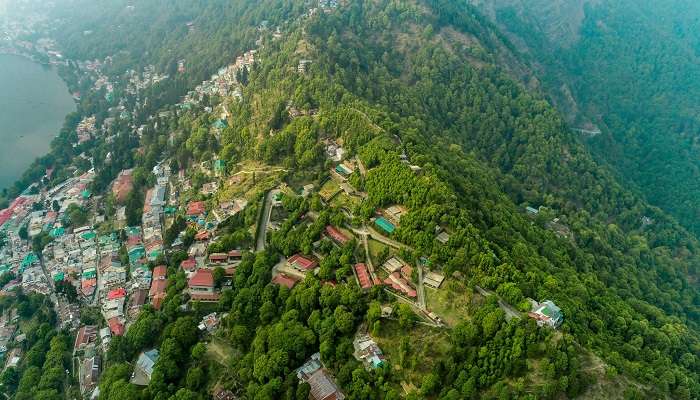
This unique and enriching wildlife experience, located at an altitude of 2.1 km above sea level amidst the scenic hills of Nainital in Uttarakhand, is known as the GB Pant High Altitude Zoo. It was established in 1984 and was opened to visitors in 1995. The zoo has been named after one of the most famous freedom fighters and politicians of India, Govind Ballabh Pant. Spread over an area of more than 4.6 hectares, it is one of the few high-altitude zoos in the country and is specially designed to provide appropriate natural habitat conditions for species adapted to the region’s cooler climatic conditions. With its serene surroundings, finely complemented by the surroundings of the mountains all around, this zoo is certainly an ideal getaway for nature lovers and wildlife enthusiasts.
An Overview Of GB Pant High Altitude Zoo

This GB Pant High Altitude Zoo houses a variety of endangered and exotic species, including the regal tiger, the Royal Bengal, the elusive snow leopard, and the endearing red panda. The Himalayan black bear, Killinganj, the Tibetan wolf, and numerous pheasant species add further to its rich biodiversity.
The zoo design relies on natural holographic enclosures of the animals’ original habitats, and their welfare provides visitors with a first-class wildlife viewing opportunity. Apart from its exciting wildlife, the zoo is also involved in various activities of conservation and education through awareness-raising programs on the protection of wildlife and preservation of the environment. Accompanying these benefits, a visit to this zoo has the assurance of viewing a good number of the most interesting creatures on earth, besides getting enlightenment on the preservation of our natural world.
Also Read: Offbeat Places In Nainital
GB Pant High Altitude Zoo location
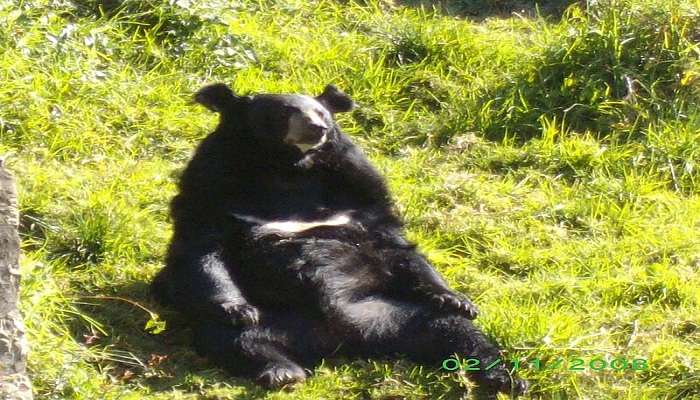
The GB Pant High Altitude Zoo is situated in the enchanting hill resort of Nainital, Uttarakhand State of India. Situated on Sher Ka Danda Hill at an elevation of 2,100 meters above mean sea level, this zoo subsumes a serene and gorgeous environment. This zoo lies about 2 km from the Nainital Bus Station and is accessed either by a short drive or an equally lovely walk through the streets of Nainital. One can also take the popular ropeway along the way to the zoo for a wonderful view of the town and its surroundings from an aerial perspective.
Not only is this zoo easily accessible, but the location has also been strategically chosen to provide an optimal habitat for its inhabitants. The cool, temperate climate and dense forest cover of this region are very close to the normal habitat conditions of the high-altitude species housed here. From this zoo, one gets stunning panoramic views of the Kumaon hills, the lush green surroundings, and the glittering Naini Lake below. This idyllic setting not only enhances the visitors’ experience but also goes a long way in making the G.B. The Pant High Altitude Zoo, one of the most famous tourist places in Nainital, definitely has become an important destination for nature and wildlife buffs.
GB Pant High Altitude Zoo timings
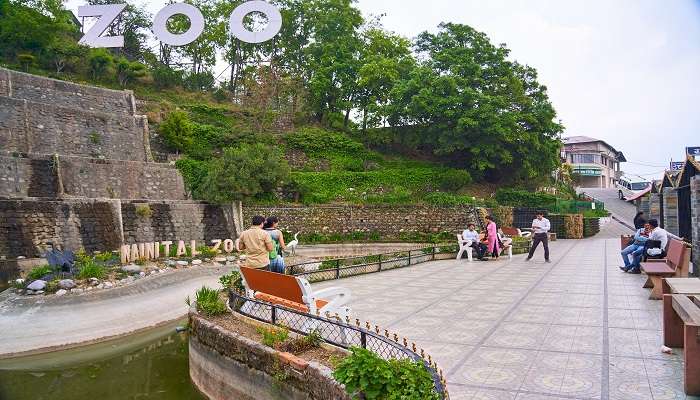
Well, GB Pant High Altitude Zoo is open all the time for visitors, but it does follow seasonal timings due to extreme variations in the weather of this region. In the summer months from March to October, the zoo runs from 9:30 a.m. to 4:30 p.m. During the winter months, from 10:00 a.m. to 4:00 p.m., one can visit during the warmer part of the day.
The zoo remains closed to visitors on Mondays for maintenance and on certain national holidays, so it is best to check for any updates or special closures before planning a visit. These timings ensure that visitors can comfortably spend enough time viewing the varied wildlife and scenic beauty that the zoo offers, with the least possible disturbance to the routine of the animals.
Related Post: Naina Peak West
GB Pant High Altitude Zoo animals
The GB Pant High Altitude Zoo enriches these Nainital tourist attractions with a differentiated and peculiar regional range of wildlife, especially those habituated in high altitude environments. The zoo reflects its motivation towards conservation and education by maintaining naturalistic habitats and spreading awareness about endangered species. Visitors can stroll through this fascinating array of mutated big cats to charm red pandas and let this rich biodiversity enhance their knowledge.
1. Big Cats

One of the main attractions of the zoological garden is the Royal Bengal Tiger. With his regal majesty and coats of bright orange color with black stripes, these magnificent creatures are known worldwide and are endemic to the thick forests and mangroves of India. The zoo offers a spacious and enriched enclosure resembling the natural habitat of these powerful predators so that tourists can have a closer view of the animal.
Tip: Catch the tiger enclosure during feeding displays—normally in the mornings—to view the mighty predator in action and learn more about their natural habits from the keepers.
2. Snow Leopard
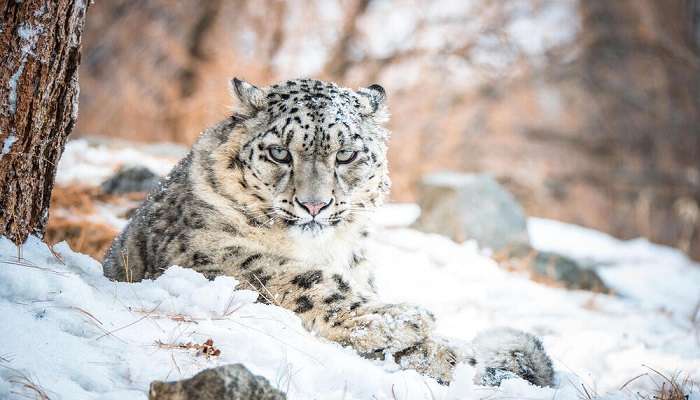
Another highlight is the elusive snow leopard, which does well in the high-altitude terrain of the zoo. Known for its thick, beautiful fur and long, bushy tail, the snow leopard is adapted to the cold climates of the Himalayas. It is thus expected that by housing this endangered species, people can become more aware of the challenges to their conservation in the wild.
Tip: Visiting early in the morning or late afternoon is recommended since it is the time when snow leopards are active and wandering around their enclosure. When it becomes hot, they seldom come out during the middle of the day.
Related Post: Places To Visit In Pangot
3. Red Panda

The charmer is the red panda, which is the visitors’ favourite. The red panda is a mammal from the Himalayas and southwestern China, with reddish-brown fur and a bushy tail with many rings. The zoo’s enclosure for the red pandas is tailored to provide comfort by having plenty of trees and climbing structures, which would imitate their natural habitat and behaviour.
Tip: These red pandas are most active during dawn and dusk. It is thus best to visit during these times of the day when they climb, play, and forage up on their trees or climbing structures.
4. Himalayan Black Bear
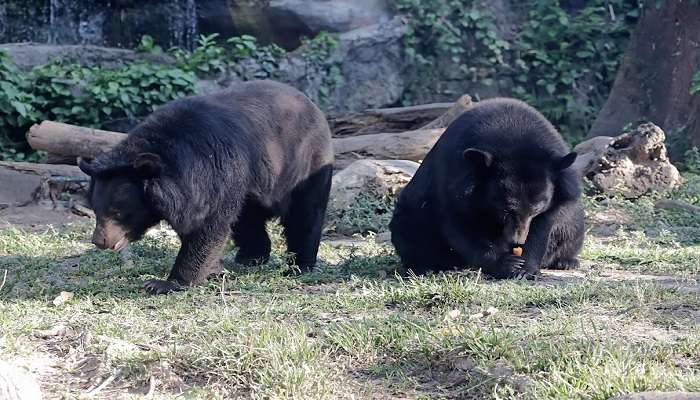
Another important resident of the zoo is the Himalayan black bear. These bears are characterized by their jet-black fur and a striking white crescent on their chest. Since they live in the forests and mountainous terrain of the Himalayas, the enclosure with proper space and natural vegetation provides ample opportunities for the bears to exhibit natural behaviours.
Tip: Check the zoo’s schedule for bear enrichment activities and feeding sessions. These are the best opportunities when one gets better views of the Himalayan black bears with them engaging in the environment and doing natural behaviours.
Related Post: Eco Cave Gardens
5. Tibetan Wolf

The Tibetan wolf is well-suited to cold, mountainous regions, with thick fur and sharp features. Wolves are little known, but they perform an essential task in maintaining the balance of the ecosystem. A display of the Tibetan wolf reveals characteristics of their behaviour, habitat, and the amount of conservation required to protect them in their natural habitat.
Tip: Upon entry to the enclosure of the Tibetan wolves, take a little time to just sit and observe these rather reclusive creatures. There are information boards throughout that describe the social structures and status of wolves in relation to conservation.
6. Pheasants
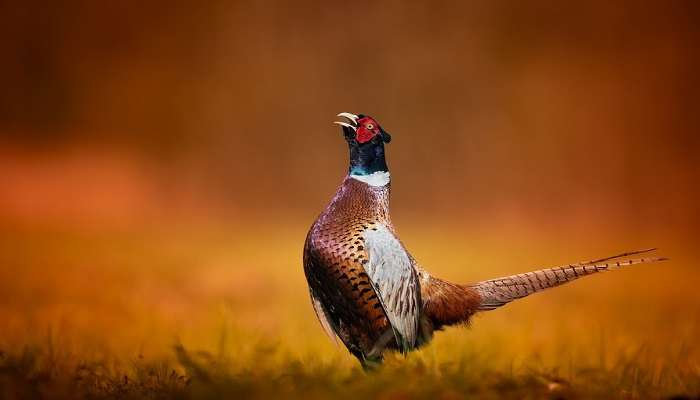
The zoo also consists of different pheasant species, including the brilliant Monal pheasant, an important mandate for the State of Uttarakhand. These gaudy birds are recognized through their bright feathers and intricate courtship rituals enacted throughout the mating season. Pheasantries have conditions simulated according to their normal habitat characteristics, which are characterized by dense vegetation and open grazing areas.
Tip: Bring a pair of binoculars to view the vibrancy of the plumage and behaviours of the pheasant more closely. Come during the breeding season to witness the rhythmic elaborate mating displays and courtship rituals.
You May Also Like To Read: Best Places To Visit In Nainital
Bring yourself to the GB Pant High Altitude Zoo and enjoy an infinite moment of wild expedition in the heart of Nainital. Feel the feel of sightseeing majestic big cats, the graceful playing of red pandas, and beautiful colour-tinted pheasants housed in naturalistic enclosures. With its distinct high-altitude setting and commitment to conservation, this zoo promises an educational and enriching experience for visitors. Be a part of this rare opportunity to bond with nature and get an insight into the conservation of the rich variety of wildlife. Buy your tickets now, plan your trip to Uttarakhand, and make it unforgettable!
For our editorial codes of conduct and copyright disclaimer, please click here.
Cover Image Source: Facebook
Frequently Asked Questions About GB Pant High Altitude Zoo
What are the timings of G.B. Pant High Altitude Zoo?
G.B. Pant High Altitude Zoo has seasonal timings, wherein it caters to the prevailing weather conditions. From March to October, during the summer months, visiting hours start from 9:30 am and end at 4:30 pm. During winter from November to February, one can visit between 10:00 am and 4:00 pm.
How to reach G.B. Pant High Altitude Zoo?
The zoo is located on Sher Ka Danda Hill in Nainital, about 2 km from the main Nainital bus stand. One can easily get to the zoo with a quick drive or enjoy a picturesque walk through the town.
What kind of animals are there in G.B. Pant High Altitude Zoo?
This zoo is a reservoir of high-altitude wildlife. Major attractions include the Royal Bengal tiger, snow leopard, red panda, Himalayan black bear, and Tibetan wolf. Other endemics include several species of pheasants with brilliant feathers, like the Monal pheasant.
Are there any special programs or activities at the zoo?
It does; the G.B. Pant High Altitude Zoo has some special programs regarding conservation education and wildlife awareness, such as guided tours, feeding sessions, and enrichment activities for the animals.
What are the facilities available at the zoo?
It is well-endowed with facilities that help in making a visitor's time at the zoo fulfilling. Well-maintained pathways and viewing platforms help in easy access and convenient wildlife observation. The information boards and educational signage placed within the premises will help the visitor learn about the animals and their habitats.
People Also Read:
Sriracha Tiger Zoo Lokaranjan Aqua World Underwater Zoo Singapore Zoo

With a passion for exploring and travelling to the roads long forgotten, experience the world through enthralling stories and adventures. Join me as I share my experiences at some of the world’s most popular tourist destinations and quench that pestering curiosity with something exciting!











